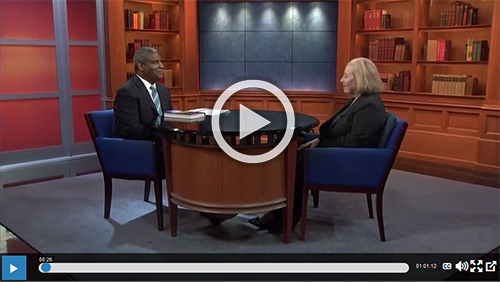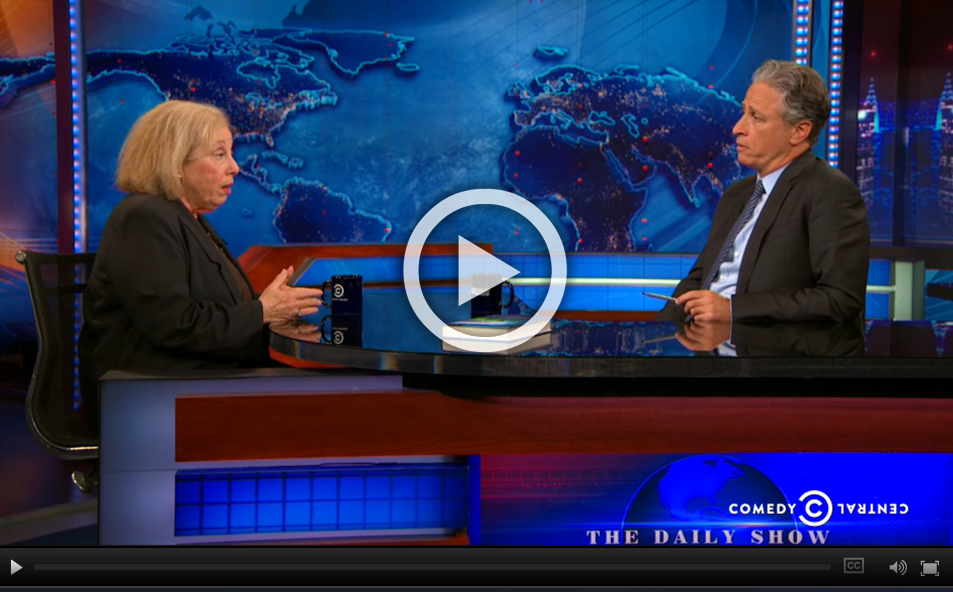Building Infrastructure for America’s Transportation Future
Big-scope infrastructure projects can provide seamless, multimodal transportation for passengers and freight, according to Harvard Business School’s Rosabeth Moss Kanter, who spoke recently at the conclusion of Volpe’s Transportation and the Economy speaker series.
Before laying out a blueprint for the future, Kanter talked about visionary transportation and infrastructure projects of the past. There was the golden spike that completed America’s transcontinental railroad, which was driven in 1869. A century later, huge investments in science and technology made sure the first person to walk on the moon was an American. In 1992, the final mile of the interstate highway system was paved, going through Glenwood Canyon in Colorado.
What do all those extraordinary infrastructure projects have in common? Their major and incremental achievements were propelled by a strong rationale: national defense. What’s missing today? A strong rationale: a catalyst for multimodal arteries that promote the free flow of commerce and personal travel, Kanter said.
The Pillars of Big-Idea Projects
There are three pillars of big-scope transportation infrastructure projects, said Kanter, author of the new book Move: Putting America’s Infrastructure Back in the Lead and more than a dozen other books on corporate leadership and organizational development.
Broad, clear visions make up the first of the three pillars that Kanter identified during her talk at Volpe. Defining a new, visionary pillar is step one toward improving mobility through creative ideas about transportation.

Harvard Business School’s Rosabeth Moss Kanter speaks at Volpe as part of the Transportation and the Economy speaker series. (Volpe photo)
“The rationale has to be the future, it has to be about growth,” Kanter said. “We need to have visions of what our cities should be, of what our country should be, and where we want our connections to be. Those are the visions. To be the land of opportunity again, we need to be the most mobile society on earth—efficiently, safely, and with as few environmental side effects as possible.”
Inventive, problem-solving individuals make up the second pillar. Kanter noted that Uber, despite public relations stumbles, still achieved $50 billion in market value. That monetary value shows that there is a real hunger for data-driven solutions to transportation problems, Kanter said.
“Entrepreneurs matter. I used to say parking apps aren’t going to change the world. But now I’m thinking those and associated technologies could change the world because a lot of congestion is caused by people driving around looking for parking,” she said.
Partnerships make up the third pillar. Major transportation projects are complex beasts that can take years, even decades before they are realized. These projects often eschew conventional thinking on government-sponsored projects by using public-private partnerships.
“It doesn’t take a village,” Kanter said. “It takes a multijurisdictional stakeholder coalition. You can’t get projects done without identifying multiple stakeholders and including them from the beginning. It may be a revolving group, and there may be champions who persist even when political administrations change.”
Writing a New Story on Transportation Infrastructure
The Port Miami Tunnel is one example Kanter cited as a project built using coalitions and a strong rationale. The tunnel started with a clear and necessary vision: to relieve congestion in downtown Miami related to freight and cruise ship related traffic. Project champions and public-private partnerships kept momentum strong, despite political resistance, since the tunnel was proposed more than 30 years ago.
Despite setbacks, public and private champions of the Port Miami Tunnel project built their case, achieved small wins throughout the regulatory and planning processes, and, perhaps most importantly, stuck to their story about why the tunnel was needed.
“America is due for a new narrative,” Kanter said. “We should be the most mobile country in the world in terms of getting where we need to go safely, effectively, and in an environmentally friendly way. We’re multimodal people. We don’t care how we get where we want to go, and we want to be able to go seamlessly.”



